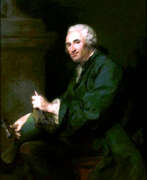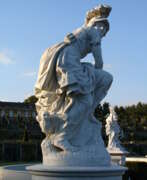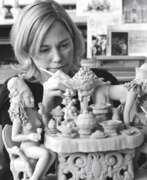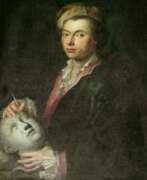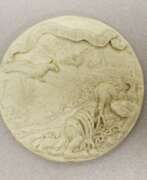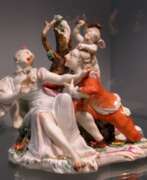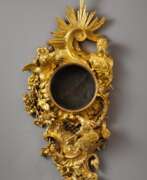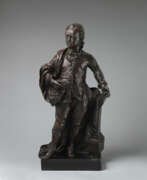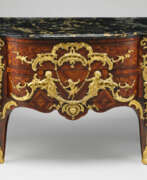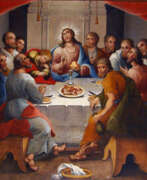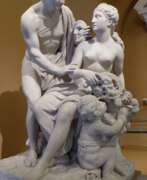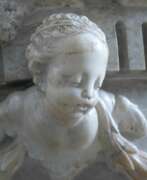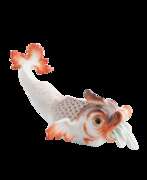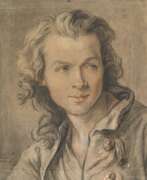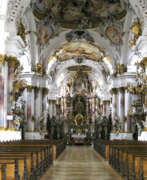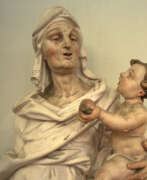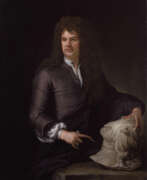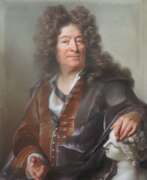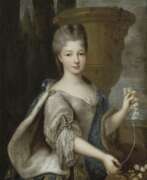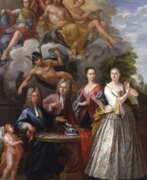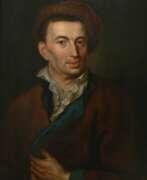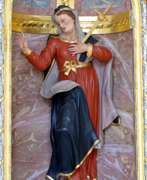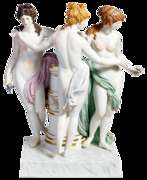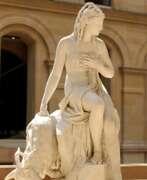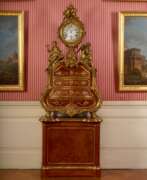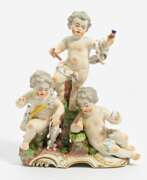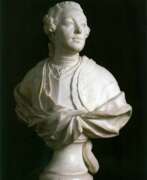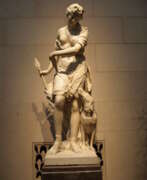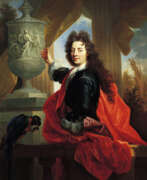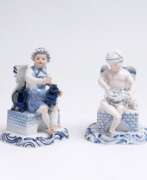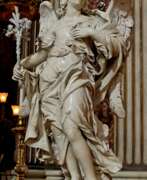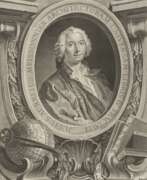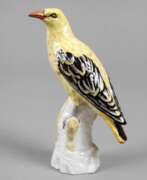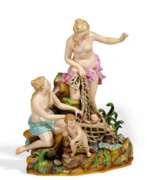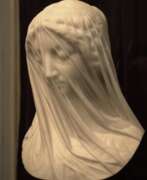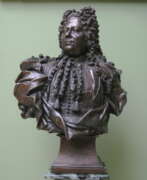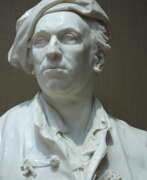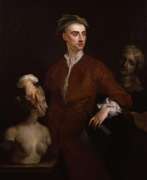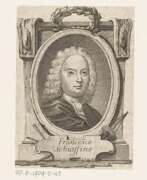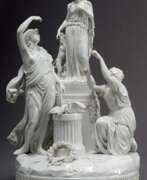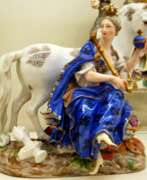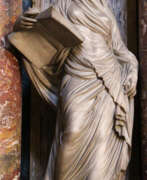Sculptors Rococo
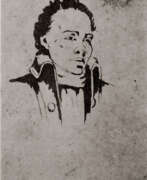

Antônio Francisco Lisboa, known as Aleijadinho, was a renowned sculptor, carver, and architect in Colonial Brazil. His exceptional works adorned numerous churches across the country, showcasing a style influenced by Baroque and Rococo. Considered the greatest exponent of colonial art in Brazil, Aleijadinho is recognized internationally as a leading figure in Baroque art in the Americas.
Despite limited biographical information, his contributions are celebrated through the vast body of work he left behind. His creations, including carvings, architectural projects, reliefs, and statues, were concentrated in Minas Gerais, notably in Ouro Preto, Sabará, São João del-Rei, and Congonhas. The Church of Saint Francis of Assisi in Ouro Preto and the Sanctuary of Bom Jesus of Matosinhos showcase some of his most significant works.
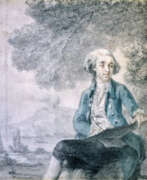

Louis-François Cassas was a distinguished French landscape painter, sculptor, architect, archeologist and antiquary.
Besides his architectural and archaeological drawings and sketches, he drew numerous costumes studies, views and processions, as well as scenes from daily life, plants and animals of all sorts. He also exhibited views of his travels at the "Salons", which were periodic art exhibitions sponsored by the French Académie Royale, in 1804 and 1814, and published Picturesque views of the Principal Sites and Monuments of Greece, of Sicily, and of the Seven Hills of Rome, of which thirty parts had already been published by 1813.
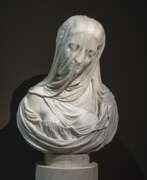

Antonio Corradini was an Italian painter and sculptor of the Baroque period.
He was a pupil of the sculptor Antonio Tarsia (1663 - c. 1739) and worked in Venice, Dresden and St. Petersburg. In Vienna, he was court sculptor to Holy Roman Emperor Charles VI for 10 years.
Corradini became famous for his sculptures "under the veil", through which the contours of the face and body are discernible. Contemporaries were delighted by this inscrutable art. In 1716-1717 Antonio Corradini executed eighteen busts and two statues for the Summer Garden in St. Petersburg by special order of the Russian Tsar Peter the Great.
Then the master was followed by orders from all over Europe, he created many more sculptures on religious, mythical and allegorical subjects. His works can still be seen in many museums and private collections around the world.
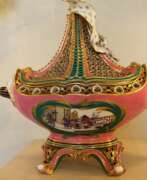

Jean-Claude Chambellan Duplessis was a goldsmith, sculptor and ceramics modeller, bronze-founder and decorative designer working in the Rococo manner. He served as artistic director of the Vincennes porcelain manufactory and its successor at Sèvres from 1748 to his death in 1774 and as royal goldsmith (orfèvre du Roi) from 1758 to 1774.
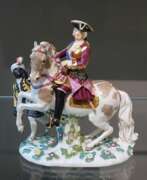

Johann Joachim Kändler was a German sculptor and porcelain artist best known for his role in transforming European porcelain, particularly through his work at the Meissen porcelain factory. His sculptures and figurines, characterized by their natural motifs and intricate details, significantly impacted the porcelain industry.
Kändler's early works often depicted elements from nature, with his bird sculptures—such as those of jays and woodpeckers—being particularly notable. As his career evolved, he delved into smaller decorative figures, such as those from the "Swan Service," a collection of detailed and delicate porcelain pieces. Kändler also drew inspiration from the commedia dell'arte, a popular form of theater, creating vibrant figurines that captured the spirit of this genre. His "Monkey Band" from 1753 is an enduring piece still celebrated today.
Throughout his career, Kändler produced over a thousand different items, many of which are now considered timeless masterpieces in European porcelain art. You can find his works in museums and galleries, such as the British Museum, Seattle Art Museum, and The Metropolitan Museum of Art. Some pieces are even available for auction or sale, often fetching high prices due to their rarity and artistic significance.
If you'd like to learn more about Johann Joachim Kändler or stay updated on related sales and auctions, you can subscribe to our newsletter for timely information and insights into his works.
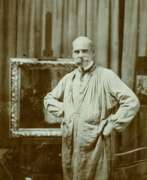

Gaston La Touche was a French painter, illustrator, engraver, and sculptor, a representative of Post-Impressionism.
In his paintings the artist showed his idealistic universe inhabited by nymphs in parks, among fountains, flowers and fireworks.
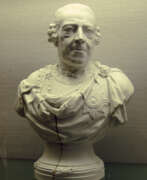

Friedrich Elias Meyer, called the Elder, was a German sculptor and porcelain modeller during the Rococo period. He created numerous models for the Meissen Porcelain Factory, but made a name for himself primarily as a model master at the Royal Porcelain Manufactory in Berlin.
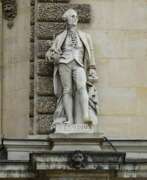

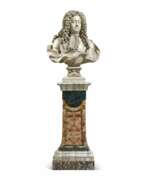

Giuseppe Rusnati was a Lombard sculptor of the Rococo period. Known for having trained with Ercole Ferrata and subsequently from 1673 to c. 1686 training a young Camillo Rusconi, prior to the latter's relocation himself to Ferrata's studio in Rome. He worked for many years for the Duomo of Milan, where he worked along with Giuseppe Buono and Carlo Simonetta.
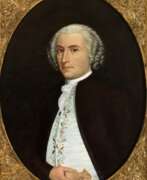

Francisco Salzillo y Alcaraz, a Spanish sculptor born in Murcia in 1707, was an iconic figure of the 18th century, particularly renowned for his Baroque style that beautifully transitioned into Rococo and Neoclassicism. The son of an Italian wood sculptor, Nicolás Salzillo, Francisco was deeply influenced by his father's craft and the local artistic milieu of Murcia. He became the most prominent member of his artistic family, taking over the family workshop at a young age and later establishing a small academy.
Salzillo's work is distinguished by its emotional depth and the naturalistic portrayal of religious themes, often in polychromed wood. Unlike his predecessors who focused on the drama of religious scenes, Salzillo explored naturalistic beauty, founding the Murcian School of Sculpture. His main works, such as "La Cena" (The Last Supper), "La Oración del Huerto" (The Agony in the Garden), and "El Prendimiento" (The Arrest), showcase his mastery in capturing serene beauty and human emotion. These pieces are celebrated for their expressive detail and the lifelike portrayal of biblical scenes.
The Salzillo Museum in Murcia houses his most representative works, including the famous "Bethlehem" and eight procession steps known as "Good Friday" pieces, among other significant iconographic models and sculptures. Salzillo's legacy lives on through these works, cementing his status as a master of color and form, and as a sculptor who blurred the lines between painting and sculpture.
For art collectors and enthusiasts interested in exploring the richness of Spanish Baroque art and Salzillo's contributions to it, signing up for updates related to Francisco Salzillo y Alcaraz can provide valuable insights into new product sales and auction events. This subscription offers a unique opportunity to stay connected with the world of an artist who played a pivotal role in the transition from Baroque to Rococo and Neoclassicism, ensuring enthusiasts don't miss out on acquiring pieces linked to this master sculptor's legacy.
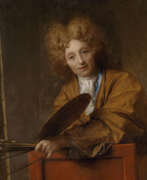

Jean-Baptiste Santerre was a French painter and draughtsman of the Style Louis XIV, known for his history paintings, portraits, and portrait-like genre subjects. Considerably influenced by Italian masters of the Bolognese school as well as his French contemporaries, Santerre nonetheless made an original contribution in his art, being among the first French painters to bring Netherlandish influences.
After achieving initial success as a portrait painter by the late 1690s, Santerre began to branch out into the fields of genre painting and, in which he combined the fantasy portrait of Northern tradition, as seen in the art of Rembrandt and Gerrit Dou, with the allegorical portrait, then fashionable in France. At the same time, he also painted history paintings and altarpieces of biblical and religious subjects, suffused with a strong erotic character.
Santerre's work brought him a controversial reputation, in light of his association with the French Regency era; it was during the 19th and 20th centuries when it met a broader appreciation. Santerre is regarded as a precursor of the Rococo era painting, as well as of both Neoclassical and Romantic painting, and was said to be an influence on subsequent generations of artists during the said eras.
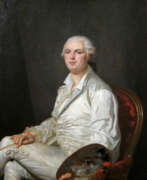



Paul Scheurich was a German painter, graphic artist, commercial graphic designer, and small-scale sculptor, renowned for his significant contribution to porcelain sculpture in the first half of the 20th century. Born on October 24, 1883, in New York City, he later settled in Germany where he developed his craft and became celebrated for his works that often mirrored the Rococo style, particularly in his designs for the Meissen porcelain manufactory from 1918 to 1936.
Scheurich's expertise in creating figurative models and his professorship at Meissen played a pivotal role in establishing him as a leading figure in porcelain art. His works, which also include stage designs and banknotes, are reflections of his diverse skill set and artistic influence during his time. Notably, his creations have graced exhibitions and left a lasting legacy in the world of art.
For collectors, auctioneers, and art and antiques experts, Paul Scheurich’s work is a symbol of refined craftsmanship and historical significance. To receive updates on new product sales and auction events related to Paul Scheurich's work, sign up for our notifications and ensure you are informed about the latest available pieces.


